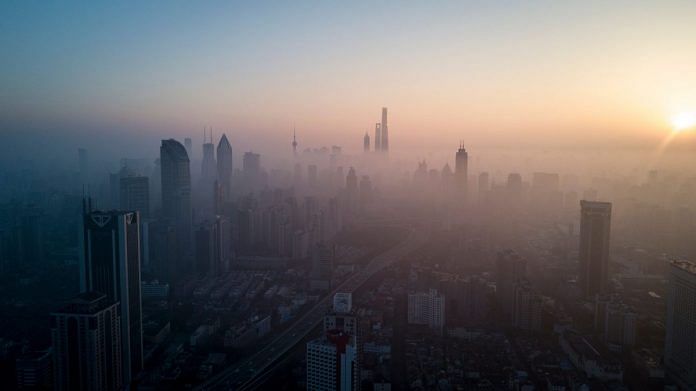How the world deals with the pressure, as urbanization pushes our metro areas still closer to breaking point, will define the shape of transport over the coming decades.
The biggest problem facing the world’s transport planners and visionaries isn’t how to develop the most amazing new transport technologies — it’s how to fit our planet’s fast-growing population into the tight confines of its ever-growing megacities.
Fourth in a series on the future of transport. Read more: Why transport’s prophets always get it wrong The $6 trillion barrier holding back electric cars Rail puts China on a Belt and Road to nowhere Our biggest cities are running out of road.
The world’s 25 largest cities will add about 113 million people in the 15 years through 2030, according to the United Nations Population Division. About three-quarters of that growth will come in 10 emerging-world centers: Delhi, Dhaka, Kinshasa, Shanghai, Lagos, Cairo, Chongqing, Karachi, Beijing and Mumbai. The least densely populated of that group already has more people per square kilometer than Paris, London, Tokyo or New York:
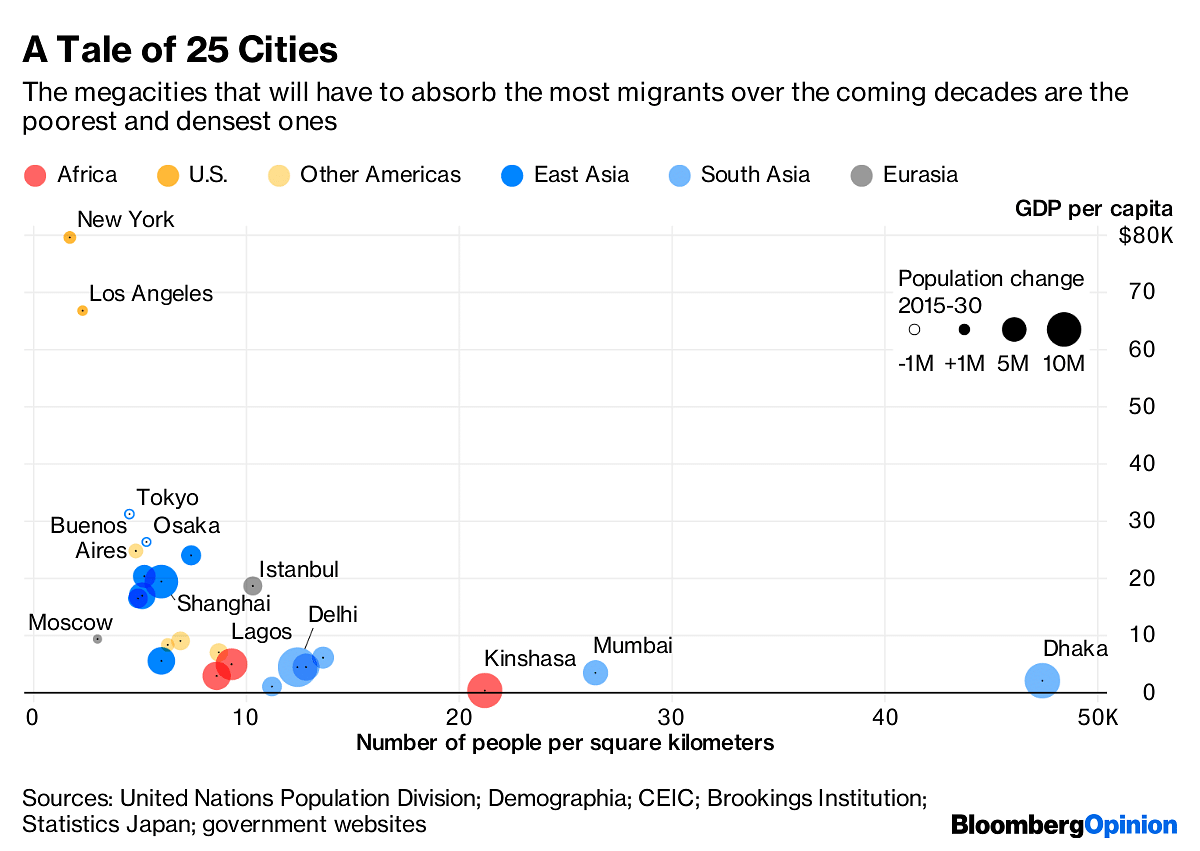
Another way of looking at this shift is to measure rising consumption of bitumen, the tarry oil residue that’s used to bind many sealed roads. About three-quarters of global bitumen usage goes into road asphalt, so the current and forecast increase in demand is a strong indicator of how we’re paving over the planet:
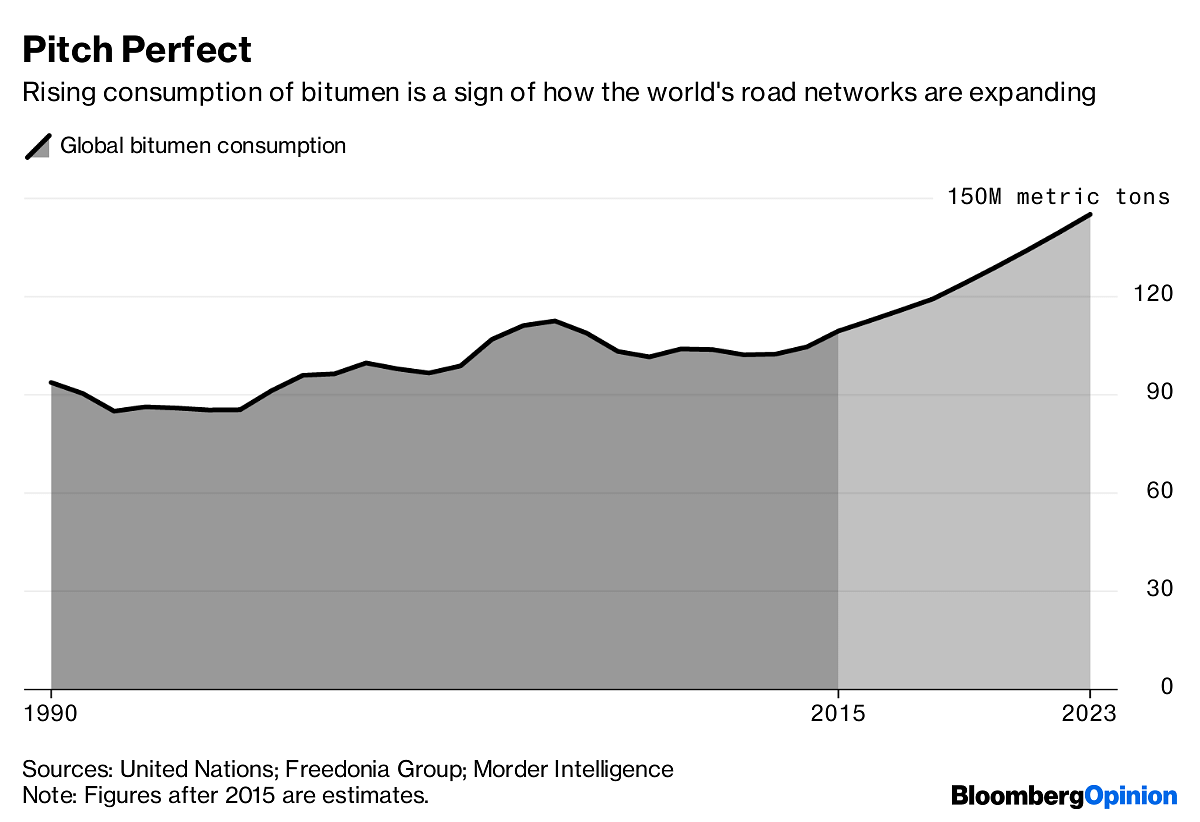
All that road transport comes at a cost, in the form of catastrophic levels of urban pollution. The most harmful varieties are particles less than one-twentieth the width of a human hair known as PM2.5. These can penetrate into the tightest spaces of the lungs, causing respiratory and other diseases. Levels in many global cities are well above those recommended by the U.S. Environmental Protection Agency, which stand at an annual average maximum of 12 micrograms per cubic meter for PM2.5:

Not all urban pollution is caused by vehicles, but getting travelers off the roads and onto dedicated and typically electrified rail networks is one way of reducing both congestion and noxious exhaust fumes. Luckily, the world is currently in the middle of a revolution in metropolitan railways, with about as many kilometers being built in the decade through 2022 as in the 150 years previously, thanks most of all to explosive growth of entirely new systems in Asia:
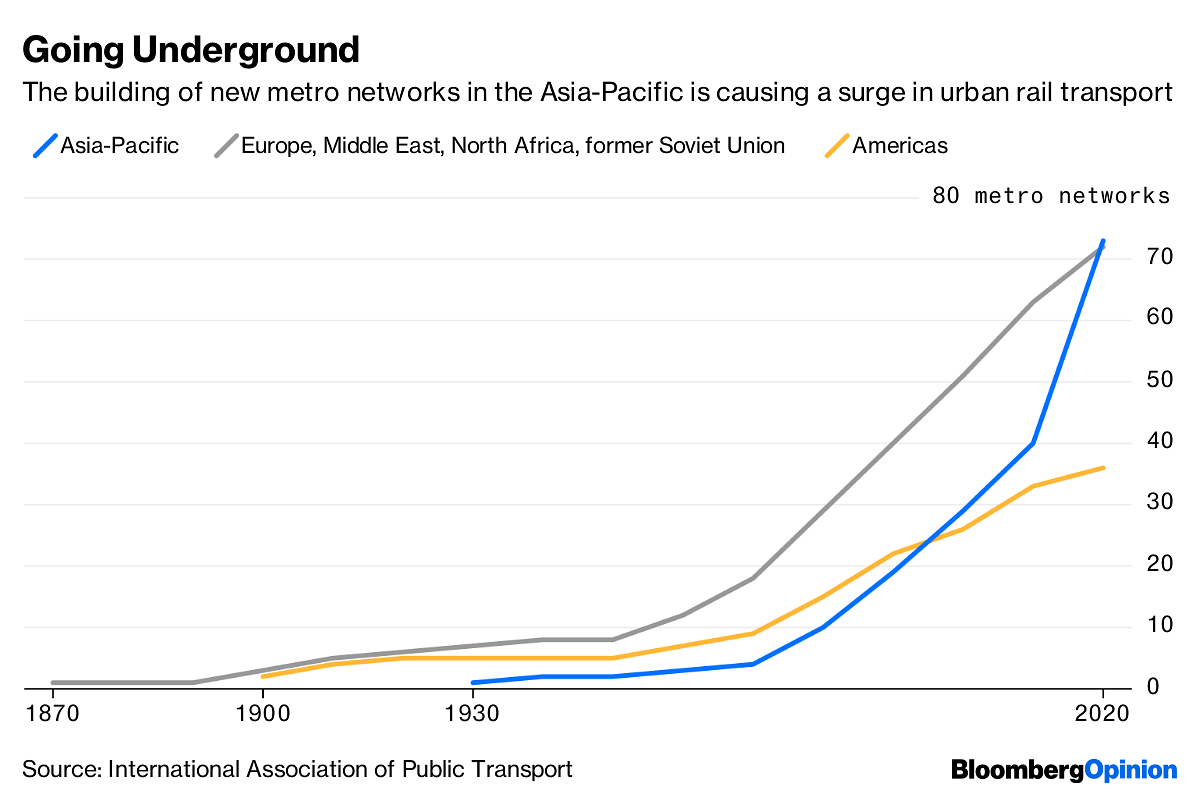
Congestion isn’t confined to the ground. As cities get bigger and the incomes of the people living in them rise, the amount of air travel between the world’s cities is set to increase, too. The most intense growth will be on the shorter- and medium-haul intra-regional markets served by the likes of the Airbus SE A320 and Boeing Co. 737 — but a crucial bottleneck will be the capacity of the airports that service this traffic:
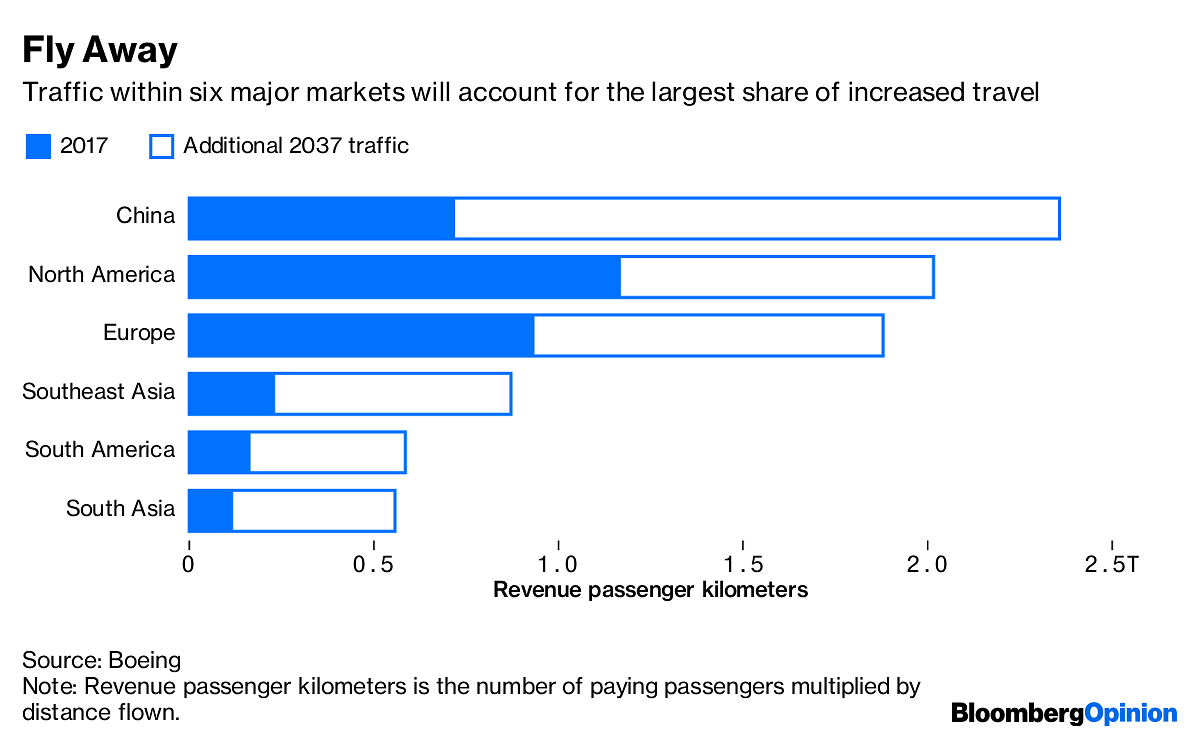
Since the globe’s urban population overtook that of rural areas in 2007, a further 777 million people have moved to the cities, based on World Bank data. How the world deals with the pressure, as urbanization pushes our biggest metro areas still closer to breaking point, will do more than anything to define the shape of transport over the coming decades.


